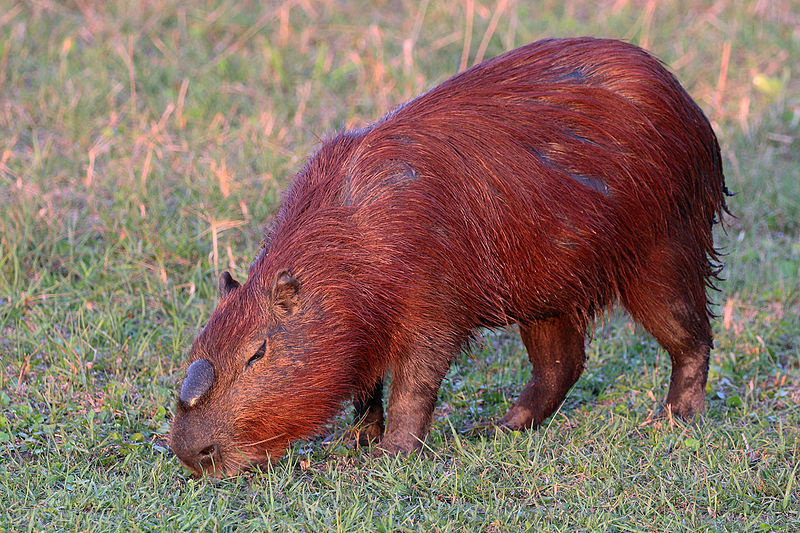Do you find the thought of a giant rodent off-putting? Do your thoughts go to huge rats running amuck in dark allies, threatening unsuspecting passers by?
I personally hold rodents in low esteem. Rats, mice…who needs them? With the exception of cavies. I spent countless hours as a child playing with guinea pigs. We had as many as 16 of these little rodents at one time (the males are very capable of chewing or climbing out of cardboard boxes to reach a female in the next box). The baby guinea pigs were very cute and the adults had quite pronounced personalities, and a lot of attitude.
It was this history with guinea pigs that made me interested in learning more about the largest rodent in the world, the South American capybara (Hydrochoerus hydrochaeris). These family-oriented herbivores are found in savannas and forested areas, living in groups of as many as 100 members. They are excellent swimmers and can remain underwater for as long as 5 minutes. In fact, capybara mate only in the water. (Perhaps it’s not surprising then that the South American alligator, the caiman, is one of the capybara’s greatest predators.)

With their squared-off nose and lack of tail, capybaras actually resemble guinea pigs. However, these oversized cavies weigh as much as 40 pounds. and can reach 24” at the shoulder, the size of an average standard poodle. Guinea pigs, on the other hand, weigh in at 2–3 pounds, and are 3–4” tall.
Their proportions make capybaras 60 times more massive than their closest relatives, rock cavies (Kerodon sp.) and 2,000 times more massive than the common mouse (Mus musculus). This tremendous size difference is why Herrera-Álvarez et al. took a closer look at the capybara, studying its propensity to develop cancer and other tradeoffs that would seem to coincide with its exceptional size.
Continue reading “Giant Rodent, Lowered Cancer Rates: What Genetic Analysis Reveals about the Capybara and Cancer”